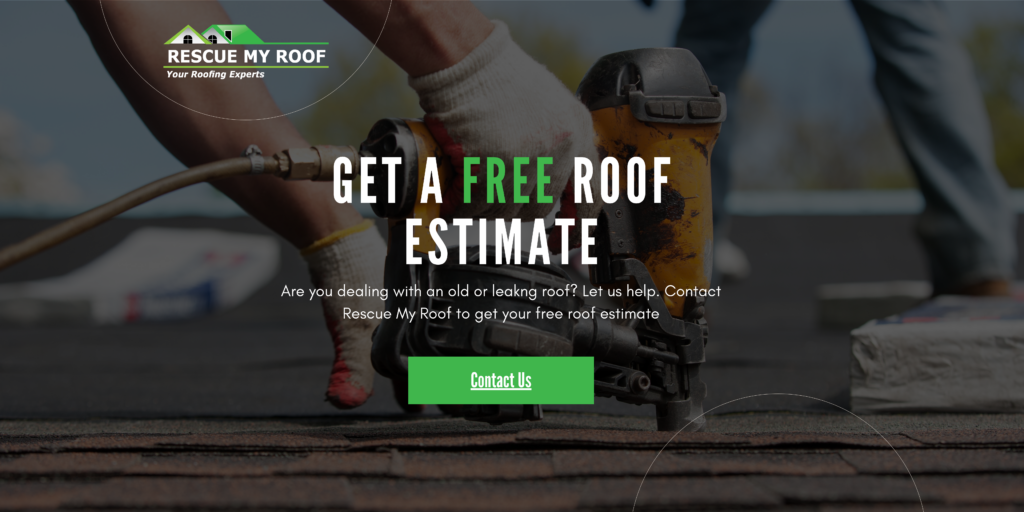The Top 8 Problems With Metal Roofs
Metal roofs have gained immense popularity in recent years due to their durability, energy efficiency, and aesthetic appeal. However, like any other roofing material, they come with their own set of challenges.
You deserve peace of mind knowing your roof will last a lifetime – so how do you avoid these common metal roofing issues?
Rescue My Roof has been working with homeowners for over a decade, helping them achieve roofing solutions that protect their homes for years to come. We always teach that the first step is knowing about the potential problems that could occur with your new metal roof to prevent issues from the very start.
In this article, we’ll explore the top eight problems associated with metal roofs and how to address them. Ultimately, you’ll be able to anticipate metal roofing issues and address them head-on.
8 Common Metal Roof Problems
When installed correctly, metal roofs are one of the most durable roofing materials. But that doesn’t mean you won’t face any metal roofing challenges.
Here are the top eight metal roofing issues homeowners face that you should keep an eye on.
1. Noise

One of the most common complaints about metal roofs is the noise they produce during rain or hailstorms. The sound of raindrops hitting the metal surface can be amplified, creating a noisy environment inside the house. While some people find this sound soothing, others may find it disruptive, especially during heavy rainfall.
To minimize noise, installing additional insulation or underlayment beneath the metal panels can help dampen the sound. Additionally, selecting thicker gauge metal panels or opting for textured coatings can reduce noise levels.
2. Expansion and Contraction
Metal roofs are prone to expansion and contraction with temperature fluctuations. This natural movement can lead to problems such as roof leaks, loosening of fasteners, and warping of metal panels over time.
Proper installation with expansion joints and fasteners designed to accommodate thermal movement is crucial. Regular inspections and maintenance can help identify and address any issues before they escalate.
3. Corrosion
While metal roofs are known for their longevity, they are still susceptible to corrosion, especially in coastal areas or regions with high levels of air pollution. Rust and corrosion can compromise the structural integrity of the roof and lead to premature failure.
Choosing corrosion-resistant materials such as galvanized steel, aluminum, or zincalume can mitigate the risk of corrosion. Regular cleaning and applying protective coatings can also help prolong the lifespan of the roof.
If you live in an area where corrosion is a major concern, talk to a roofing professional and get multiple estimates. Doing your due diligence can help you find the best roofing material for your home.
4. Denting
Metal roofs can be prone to denting, particularly from falling branches, hailstorms, or heavy objects. While minor dents may not affect the functionality of the roof, extensive damage can compromise its integrity and lead to leaks.
Invest in impact-resistant metal panels or install protective barriers such as snow guards to help minimize the risk of denting. Additionally, it’s best to promptly repair any dents or damage to prevent further issues down the line.
5. Oil-Canning

Oil canning is visible waviness in the flat areas of metal roofing and metal wall panels. It can occur in any type of metal panel, from steel to aluminum to zinc or copper.
Oil canning is a common characteristic of nearly all metal roofs/walls. When it occurs, the metal on a standing seam metal system is over-stressed and unable to hold a flat form, which causes the metal to give in and create visible waves.
There are a number of reasons that oil canning can occur, including:
- Over-production—such as extreme pressure during the coiling of the metal
- Frequent stress from coil slitting (cutting) and rollforming panels
- Inadequate space allotted for thermal expanding and contracting of the panels
- Changes to the structure’s original form that puts tension on or moves the panels
- Improper usage, handling, and storage by installers
Luckily there are ways to reduce the likelihood of oil canning, some of which include:
- Purchasing a thicker-gauge metal
- Choosing a low-gloss or matte finish to reduce reflectivity, which can decrease the visibility of oil canning
- Buying tension-leveled (stretched) metal, as this coil is already stretched beyond the point where it cannot return to its original state
- Install the roof over a flat roof deck
- Most importantly: Choose a skilled and experienced installer who is knowledgeable about the ways to avoid oil canning
6. Chalking & Fading
Chalking refers to the whitish residue that is visible on a painted or coated metal panel and is due to the paint resin breaking down from UV exposure.
Fading is when the pigment of the paint applied to the metal substrate breaks down (due to UV rays, water, pollution, chemicals, etc.), which causes a change in color. Uneven fading could happen as well because every panel on a roof isn’t always evenly exposed to the sun and other substances.
Chalking and fading will happen no matter where you live.
But the degree of chalk and fade truly depends on the environment and substances the roof is subjected to. Luckily, most reputable manufacturers offer paint warranties that cover chalking and fading exceeding a specified measurement over a period of time, which should be clearly defined in the warranty.
7. Scuffing & Scratching
Like anything that has a paint system applied to it, metal roofing could be subjected to scratching or scuffing at any point during its lifecycle.
Most contractors and installers typically handle coils and panels with care during the rollforming and installation process. But there is always the possibility that one or more of these parties improperly handles the metal, leading to some kind of surface-level damage. This could happen when:
- Edge guards are not used to protect the sheet edges in shipping
- Carriers do not handle the coil with proper lifting devices
- The coil goes through a rollforming machine and one of the components has malfunctioned or the coil inadvertently scraped up against a part of the machine
- Tools or other items have been rubbed against or dropped on a panel
- Panels are walked on, by contractors or otherwise, once installed and scuffed at heavy traffic spots, such as at flashing points or ladder entries
If you notice a scratch or scuff on a metal panel, especially one going all the way down to the metal substrate, bring it to the attention of the manufacturer or contractor. The majority of scratches can easily be fixed with a paint or touch-up pen designed to match the color of the roof. But if there is a gouge that goes down to the core of the steel, that piece of metal panel or flashing should be replaced immediately.
8. Cost
While metal roofs offer long-term savings in terms of durability and energy efficiency, they often come with a higher upfront cost compared to traditional roofing materials such as asphalt shingles. This initial investment can be a barrier for some homeowners.
Despite the higher initial cost, it’s essential to consider the long-term benefits and potential savings associated with a metal roof, such as lower maintenance expenses and energy bills. Exploring financing options or seeking out rebates and incentives can help offset the upfront expense.
Finding the Right Metal Roof
While metal roofs offer numerous benefits, they are not without their challenges. By being aware of these common problems and taking proactive measures to address them, homeowners can enjoy the durability and longevity that metal roofing provides.
To find the best metal roof, consult with a qualified roofing contractor and adhere to proper maintenance practices. These are essential for maximizing the performance and lifespan of a metal roof.
Learn more about metal roofing with “Metal Roof Warranties: What Homeowners Need to Know” and “Metal Roof Pricing (6 Types of Metal Roof).”
While Rescue My Roof does not offer metal roof installation, we can help you with all of your flat roof and asphalt roofing needs. Contact us today to get a free estimate.


